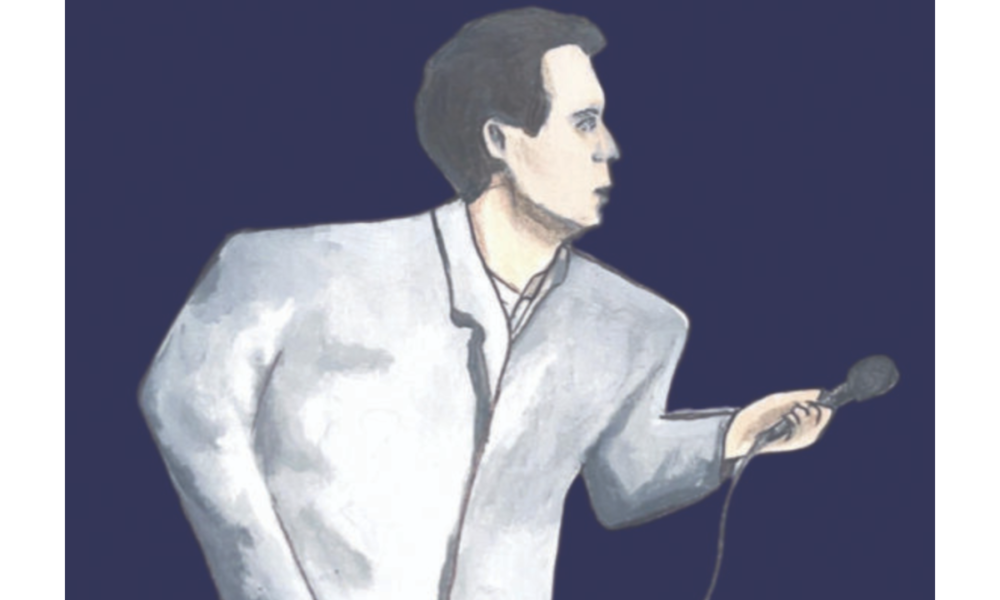As an aggressively straight drum line steadies watery synths, the members of Talking Heads cast dark silhouettes on a dimly lit red background. David Byrne’s robotic voice drones on as he comes into view, lying supine beside the drum kit. Cameras cut to a full view of the stage: Band members perform a militaristic march to Byrne’s monotonous chant of “Swamp.” The tone turns humourous as Byrne limps across the stage, tripping into a knock-kneed dance before reassuming his previous robotic stature. The sequence’s sinister tone departs deliberately from the previous tracks of ecstatic rhythm and jubilant energy in its cataclysmic visuals and unwavering force. Jonathan Demme’s 1984 concert film, Stop Making Sense, is a culmination of years of Talking Heads’ musical collaboration memorialized in a time capsule of sound and sight.
The concert film is a unique art form in itself, as it bridges musical landscapes with the world of cinema and combines the audible with the visible. This configuration’s underlying power allows the music to flow physically into the world, taking the musician’s work to new heights with interpreted imagery evocative of their sound. Stop Making Sense is a testament to the genre’s expansiveness: A celebration of joy and surrender to the sanctity of movement and rhythm.
Concert film tradition dates back long before Demme’s 1984 project, gaining rock ‘n’ roll prominence in the 1960s with films like The T.A.M.I. Show and Monterey Pop. What initially began as an informational mode of cultural diffusion, allowing audiences to see the diversity of international music, rapidly evolved during the 1970s to more stylistic collaborations between filmmaker and musician. Experimental artists sought to explore the heights of the new medium using film. These visual aides benefit their sound—a practice that dates long before the popularity of music videos—and in certain instances serve as commemorations of specific accomplishments. There are often distinctions made between concert films and concert documentaries where the former tends to focus primarily on a band’s pure musical output and the latter focuses on a band’s narrative history. However, several films such as Martin Scorsese’s 1978 film The Last Waltz diverge from this practice, combining cinematic musical performances with inklings of historical narrative.
The Last Waltz depicts The Band’s final concert at Winterland Ballroom in San Francisco—the first venue where they performed under their own name. It’s a faded picture of the past, an intimate portrayal of The Band’s impressive legacy. With the colour grading earthy, the set design jewel-toned, and the shots framed close to the subject, Scorsese’s techniques translate The Band’s palace of sound into unadulterated physicality. The film preserves their musical footprint in formal interviews, candid conversations, and onstage performances with long-time friends such as Bob Dylan, Muddy Waters, and Joni Mitchell, producing a snapshot of authenticity and a glimpse into their aspirations. It is a marker of time, an anecdote of a film that perfectly encapsulates The Band’s skill and musical legacy.
The uniqueness of each concert film exemplifies the endless possibilities of the art form. While Demme’s Stop Making Sense is otherworldly in his unabashed presentation of the avant-garde artfulness of Talking Heads, in The Last Waltz, Scorsese paints a much softer lens of The Band, staying true to their musical intentions of intimacy and harmonic connection. These films can be taken in a world of different directions. Concert films sit unparalleled on an artistic plane and cannot be replicated by any singular form. The two media of music and cinema meet where the boundaries of the singular craft can be transcended.









